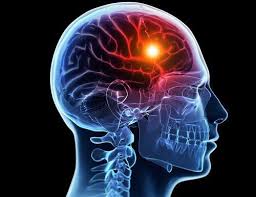A Stroke (brain attack) is a severe medical condition which claims a number of lives every year. Studies show that one person dies of stroke every 36 seconds in India. Medical experts at AMRI Hospital, one of the best multispecialty hospitals in Kolkata, explain that strokes mainly occur due to a blockage in an artery that supplies blood to the brain. It leads to the brain not functioning properly.
WHAT HAPPENS DURING A STROKE?
Strokes cause the death of a section of the brain due to loss in blood supply. The death of certain brain cells results in the loss of functions controlled by them. According to a team of Stroke specialists at AMRI Hospital, one of the best neurology hospitals in Kolkata, this usually results in a person’s incapacity to carry out motor functions. It also causes aphasia (the inability to speak) in some cases.
TYPE OF STROKES
There are majorly three types of cerebral strokes which cause different medical conditions:
ISCHEMIC STROKE
The most common type of a cerebral stroke which is caused due to an obstruction within a blood vessel supplying blood to the brain. Studies show that it accounts for more than 85% of all strokes cases.
HAEMORRHAGIC STROKE
Haemorrhagic stroke is caused when a blood vessel bursts and bleeds in the brain. It’s due to two types of weakened blood vessels — aneurysms and arteriovenous malformations (AVMs). High blood pressure (hypertension) is one the most common causes of a haemorrhagic stroke.
TRANSIENT ISCHEMIC ATTACK (TIA)
Also known as a ‘mini stroke’, TIA is caused due to a temporary blood clot in the brain.
WHAT ARE THE COMMON SIGNS THAT INDICATE THE RISK OF A CEREBRAL STROKE?
- Confusion or inability to understand
- Severe headaches without any known cause
- Weakness and dizziness
- Problems related to vision (loss of vision in one of both the eyes)
- Numbness of the face, arm, or leg (especially on any one side of the body)
- Issues related to balancing or coordination
- Difficulty in walking/movements
- Transient Ischemic Attack (TIA), or “mini-stroke”
- Loss of consciousness
- Sudden nausea, vomiting, or fever (not caused by a viral illness)
WHAT ARE THE MOST COMMON FACTORS WHICH RESULT IN CEREBRAL STROKES?
- Uncontrolled high blood pressure
- Smoking: Smokers have double the risk of ischemic stroke as compared to the non-smokers
- Family history of cerebral stroke
- Migraines
TREATMENTS FOR STROKEMEDICAL STROKE TREATMENT
One of the most common treatments which is based on a drug known as TPA (Tissue Plasminogen Activator), which breaks down the blood clots in case of an ischemic stroke. The treatment is effective in improving the patient’s recovery after the stroke. However, AMRI Hospital medics warn that this treatment is not suitable for everyone and can be used only in certain cases.
ENDOVASCULAR STROKE TREATMENT
Endovascular Stroke Treatment is used when the drugs are not able to break the clot adequately. The doctor performs an angiography of blood vessels of brain and uses a catheter to remove the clot through specialized tools.
SURGICAL STROKE TREATMENT
This procedure is usually used in case of a haemorrhagic stroke. Along with repairing the damage, it helps in preventing the problem in future. Surgical Stroke Treatment involves the removal of clot on affected artery through a surgery. However, Catheterization is used in case the damaged artery is not easily accessible for the surgery.
SOURCE: healthmilis.com

No comments:
Post a Comment